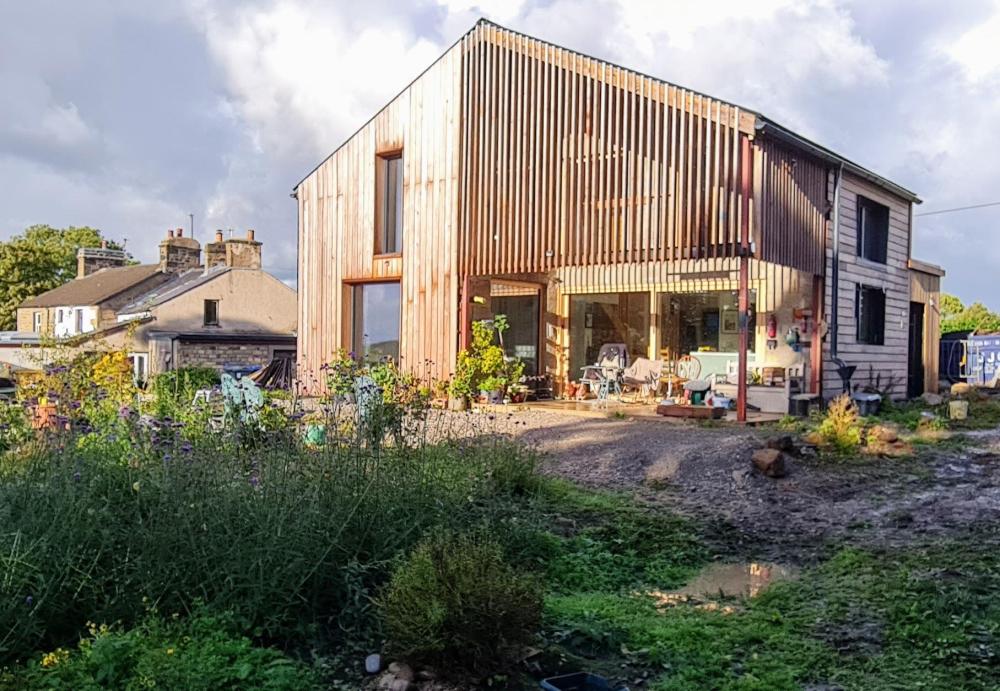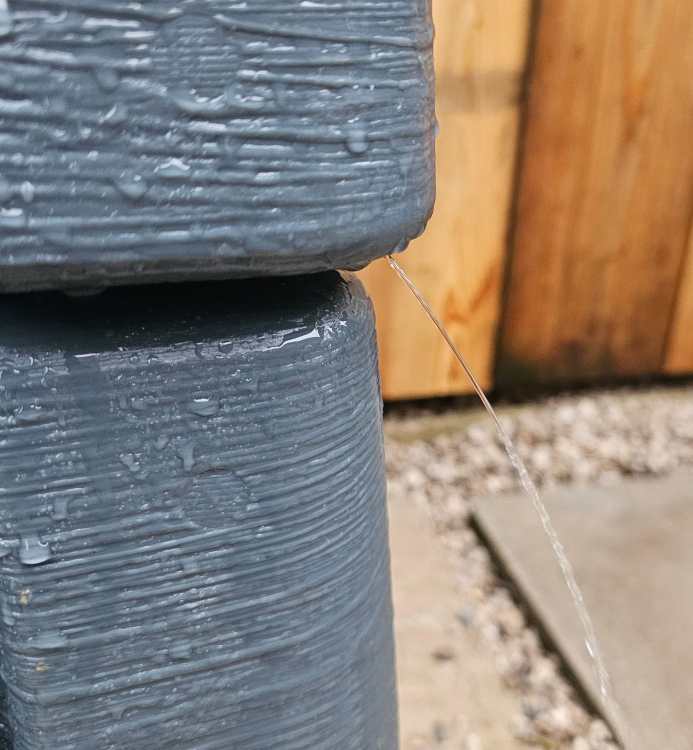-
Posts
11648 -
Joined
-
Last visited
-
Days Won
98
ToughButterCup last won the day on May 28 2025
ToughButterCup had the most liked content!
Personal Information
-
About Me
I am building a near-passive haus standard, 146 sq m living space house. I am retired, but never been busier.
I used to develop online teaching and learning resources for several northern universities. I also lectured in IT. -
Location
Junction 33 M6
ToughButterCup's Achievements

Advanced Member (5/5)
3.6k
Reputation
-
Dear Santa. The grand-children say that this year I have been very well behaved. I haven't made them pick up spilled screws, - (I let them use a magnet) or sweep the sawdust off the floor. (I let them use the blower instead) : that was fun because they learned the value of safety goggles and a face mask. And learned the difference between steel and stainless steel. And every time they have wanted to play on the digger, I let them. I even allowed them to dig a hole so deep they couldn't get out without a ladder. I had my first glimpse of the extent of their brotherly love - one chose to take the ladder away and leave his bro stuck in the hole. I also let them use the digger to fill their Tonka lorry with sand. Ahhhh.... Since I've been a thoroughly good grandad , I'm submitting the following list for family perusal and retention A BM which automatically applies decent discounts to genuine self-builders An automated lost tool finder A digger which cannot throw a track (even when it's cross with the way I drive it) Delivery drivers who read the delivery instructions A self-propelled self-cleaning cement mixer that doesn't let mortar set in the drum Pain killers that work instantly A parrot that sits on my shoulder that warns me just before I make a mistake Tool batteries that recharge themselves A laser level that remains visible in bright sunlight Better stop there, don't want to appear greedy ....😑
-
No, there isn't. How I wish there were. Just broken yet another drill bit a few minutes ago. 😐 The Independent variable (nail, screw) is too 'variable' for manufacturers to claim that their product can ... 'hack' through nails and screws without snagging. If there were, the whole world would know. And I would have bought several hundred of those mythical bits.
-

External louvres - shading solution
ToughButterCup replied to actionjackson's topic in Windows & Glazing
What a lovely design you have there.... This what we have done. The 'louvres' are just 4 by 2 bits of Siberian Larch - now contraband - bolted to the roof at the top and RSJ at the bottom . The photo was taken in the late afternoon and shows the amount of shadow cast by the slats ( thats what I call them - most people call them louvres) They make a significant difference. As you can see we sit outside in front of our kitchen window : the slats enable the corner to fill with light and provide some shade too. They also shade that corner of the house a little from the rain. Our dog chooses to lie out there in almost any weather. The plan is for SWMBO to fill that area with apprpriate plants to provide what Kevin WhatsHisface calls a Breeze Corridor. Yes, the area does overheat a bit , but we're hopeful that appropriate planting will smoothe out the temperature variation and provide some degree of air conditioning too. Looking at your design, my suggestion would be to consider moving the louvre assembly forward a little (more) to create a bigger buffer between the window and the glazing. Before i forget - window cleaning ... if the space between the house and the louvers is tight ....... -
Yes, well it would have done fine, until a mate comes round, looks at the 'repair' and asks .... "Whassat ? " and pulls the CT1 plug out with his finger nail. "With mates like you who needs enemies? " So he repaired my repair with his repair . Roofing screw + CT 1 At least the CT1 is the same colour as the water butt.
-
So is our puppy. There's piddle everywhere 🤨
-
Well since @Pocster has been brave enough to show me (us all) his : I feel brave enough to return the favour I installed a water butt - ostensibly for the wife, but actually for the Brownie Points. And its hacking it down this morning. She came in from outside giving me one of this wifely looks, and merely gestured at the water butt As yer man would say FFS
-
Good to know that we're both fekkin' eejits. Debbie always ( and gently ) says .... "Nothing to be done about it tonight even if there was a leak" It's all the fault of that cracked tile we had years ago, let in a drop or two. Of to the quack tomorra to get treatment for my PTSD.
-
In the pub - picture the scene - a few pints in and my best mate is talking about our build to another of his mates - I'm listening. He turns to me and says.... "Well you tell him what it's like to self build , errmmmm in one sentence " (how well he knows me) That shut me up good and proper. What's your one sentence answer ? What did I say? Told them to read Buildhub, especially @Onoff and then at the other end of the scale @Pocster See, yer man was wanting to start a self-build . Oh FFS.
-
Every single non-professional self builder is somewhere on the paranoid scale. Don't care what they might say in public .... Some hide their problem well, others not. I don't. It's wet innit. Small wet patch in our hallway. I see it and immediately look up at the ceiling above the wet patch. SWMBO looks at me more in sorrow than anything and says... "Our puppy can't pee from up there can she ... ya dickhead.... "
-
This case appears to me to be simple. IF the work is Permitted development - IF- and nobody in authority (other than those working on your behalf) has written to you formally to require a bat survey then one is not required. Without that formal requirement, all discussion about the issue is mere chit chat - including the hearsay related by your architect. For all you know he (she) misunderstood the context in which the ecologist referred to 'requirements' If it's not on an official piece of paper in your hands, it isn't an issue.
-
I (erm, we..😳) fitted ours so long ago I have forgotten how we did it. But I do remember fitting some of it in a thunderstorm. How tired of living were we ! In answer to your point @Oz07, you can rest a ladder on it, it sounds nice in the rain and you can't hear it expand and contract in the sun as happens on our cottage. Thanks everyone. Tomorrow's job. 😑
-
I've watched their videos and looked at the tradesman and thought they forgotten more than I know about how to do this. It's how they support the work that is so skilled. I'm going to have to set up a work table to hold the downpipe in place while I cut it. I am ashamed deeply deeply ashamed to have to admit here in front of millions of people that I have not got a hacksaw. But now that I come to think about it one of my children will have stolen it. Ah well it's an ill wind that blows nobody any good, so here's the excuse for another trip to the builders merchant. Knowing them they won't have the size I need will they? 😑
-
fekkin' it up... I have some metal Lindab downpipe that needs to be cut - to install a diverter to a water butt. I'm happy about marking it out (use a downpipe bracket) , but I'm hesitant about cutting it. Why? 'Cos it's thin. Once it's been deformed (by me grabbing it and trying to keep it still) it never goes back into shape properly. Anyone know how to cut it cleanly without bending it at the same time? I've looked on Tinternet and on Lindab's own site without much success. Hence this post.








